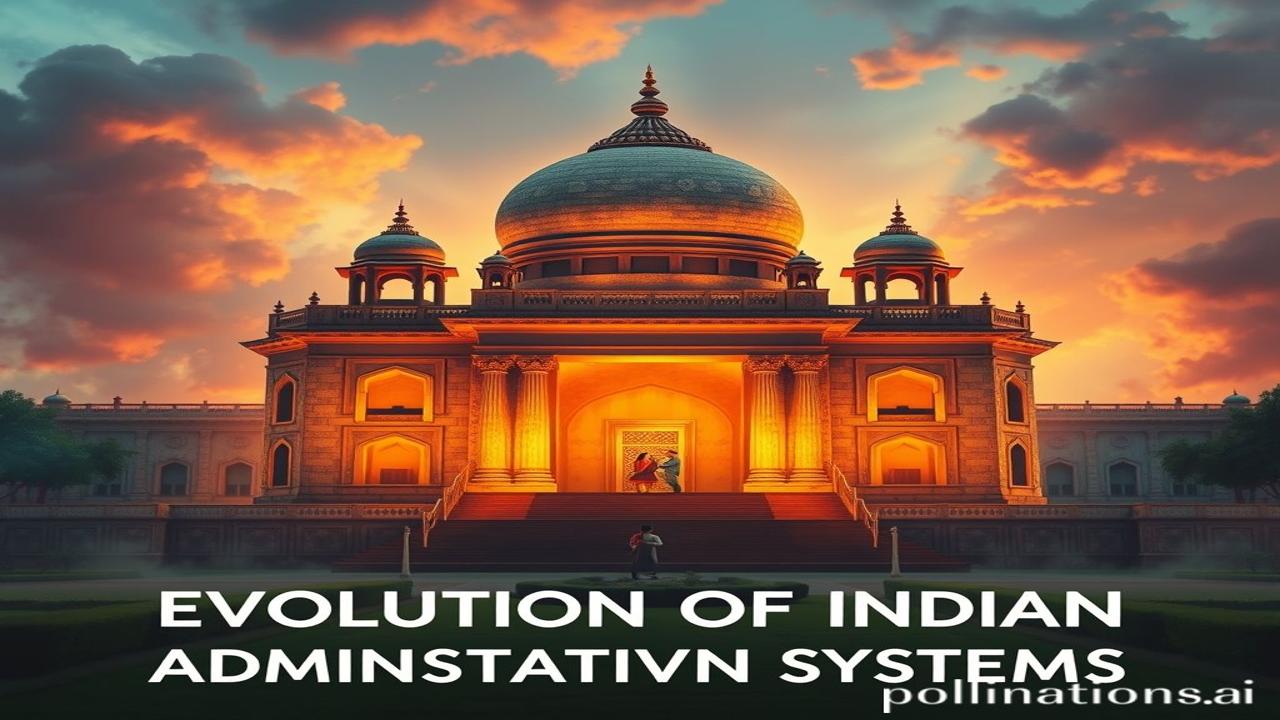Waqt Ki Dhool Mein: Tracing the Evolution of Indian Administrative Systems
Kabhi socha hai, jab hum ‘Sarkar’ ya ‘Administration’ ki baat karte hain, toh yeh kitna purana concept hai? Yeh sirf angrezon ki den nahi hai. Waqt ki dhool mein, iske nishan humare itihaas ke har panne par chhupayee gaye hain. Humare desh ki mitti mein, logon ke jeevan mein, yeh system, yeh vyavastha, hamesha se rahi hai. Toh chalo, is safar par nikle, aur dekhe ki kaise yeh Indian Administrative System badla, nikharra, aur aaj humare saamne hai.
Shuruaat Kahan Se Hui? (Historical & Cultural Context)
The story of Indian administrative systems isn’t just about the British Raj; it’s a tale that stretches back millennia. We’re talking about the Indus Valley Civilization (around 3300-1700 BCE), where well-planned cities with organized drainage systems and standardized weights and measures hint at a sophisticated form of civic administration. Imagine! Thousands of years ago, people had a system in place to manage resources and maintain order.
Then came the Mauryan Empire (322-185 BCE) under Chandragupta Maurya and later Ashoka. Think of Kautilya’s Arthashastra – not just a book of political strategies, but a detailed manual on governance. It outlined everything from taxation and law enforcement to espionage and foreign policy. The Mauryans divided their empire into provinces, each governed by a kumara (prince) or a trusted official, showing a clear hierarchical structure.
Aur phir, humare paas aaye Gupta Empire (320-550 CE), jise “Golden Age” kehte hain. Inhone local autonomy par zor diya, gram sabhas (village councils) ko shakti di. Yeh sabhas gaon ke muddon ko suljhati thi, taxes collect karti thi, aur logon ke beech mein shanti banaye rakhti thi.
Yeh system ek dum se nahi bana. It evolved, adapted, and changed with each empire and dynasty. Every ruler brought their own tarka, neeti, and vichar to the table.
Zameeni Sach: Logon Ka Jeevan Aur System
Imagine a Mauryan-era farmer, tilling his land, knowing that a portion of his harvest would go to the state. But he also knew that the state would provide irrigation, roads, and protect him from bandits. The adhikari (officials) would come, assess the land, and collect taxes fairly (at least, in theory!).
Ma Rukmini ne aaj naye kapde pehne, kyunki mandir mein utsav tha. The village headman, the gramani, was responsible for organizing the festival and ensuring everyone participated. He also resolved disputes among villagers. Life revolved around the village and its administration.
Fast forward to the Mughal period. Rulers like Akbar introduced the mansabdari system, a complex ranking system that integrated military and administrative responsibilities. Each mansabdar was assigned a rank and a number of soldiers to maintain. This system allowed for a more centralized and efficient control over the vast empire. But imagine the pressure on these mansabdars to maintain their position and keep the emperor happy!
Dharohar Aur Pehchan: Today’s Echoes
Today, although we have a modern, democratic system, the echoes of these ancient administrative practices are still visible. The idea of decentralized governance, with Panchayati Raj institutions at the village level, harkens back to the gram sabhas of the Gupta period. Our civil services, inspired by the British ICS, also borrow from the hierarchical structures and merit-based recruitment processes of earlier empires.
Bharatiyata, or Indianness, lies in this continuous evolution, this seamless blending of tradition and modernity. The administrative systems we have today are built on the foundations laid by our ancestors.
Mazedar Tathya Ya Bhram-Bhanjak
Myth: Log samajhte hain ki Angrezon ne hi India mein sabse pehle written laws banaye.
Truth: Asli sach yeh hai ki Kautilya’s Arthashastra, almost 2300 years ago, mein detailed laws the dealing with everything from property rights to criminal justice! We had a sophisticated legal framework way before the British arrived.
Drishya Aur Bhavnayein
Imagine walking through the bustling markets of Pataliputra (modern-day Patna) during the Mauryan era. The air would be thick with the scent of spices, incense, and freshly baked bread. The sounds of bartering, the chanting of prayers, and the rhythmic beat of drums would fill the air. The walls of the royal palace, adorned with intricate carvings, would stand as a testament to the power and prosperity of the empire. The feel of the smooth stone pathways under your bare feet, the vibrant colors of the merchants’ stalls, the energy of a thriving society – all these sensory experiences paint a vivid picture of ancient Indian administration in action.
Antim Vichar Ya Uddharan
As we journey through the evolution of Indian administrative systems, one thing becomes clear: parivartan hi jeevan hai (change is life). These systems adapted, evolved, and transformed, leaving behind a rich legacy that continues to shape our present.
“कर्मण्येवाधिकारस्ते मा फलेषु कदाचन।”
(Karmanye vadhikaraste Ma Phaleshu Kadachana) – You have the right to work, but never to the fruit of the work. This ancient verse encapsulates the spirit of selfless service that should be at the heart of any administrative system, ancient or modern.
